Overview Xiaomi Mi Pad 3 - plate with a good screen and enduring battery
Devices / / December 19, 2019
The first Mi Pad was a success, but a continuation of the line was less fortunate. Two operating systems (Android and Windows), Intel processor and a lot of problems with unadapted under him third-party software gave rise to serious criticism on the part of buyers.
The third generation - the return of developers to the traditional concept of the tablet as a device for content consumption. With a proven stable processor and its own operating system based on Android.
Characteristics
| Display | 7.9 inches, 2048 × 1536 pixels, 326 ppi |
| CPU | MediaTek MT8176, 2,1 GHz, 28 nm |
| Graphic arts | IMG PowerVR GX6250 GPU |
| RAM | 4GB LPDDR3 |
| read-only memory | 64GB eMMC 5.0 |
| Front-camera | 5 Mn, aperture f / 2,0 |
| The main camera | 13 Mn, aperture f / 2,2 |
| Battery | 6600 mAh, 5 V / 2 A, USB Type-C |
| Dimensions | 200.4 × 132.6 × 6.95 mm |
| Weight | 328 g |
| operating system | Android 7.0 Nougat, MIUI 8.2 |
Appearance and ergonomics


With a design in Xiaomi's all right. Clear straight lines, slightly rounded corners, flat surfaces. Side frames are minimal, the top and bottom - symmetrical. They lack precisely in order to ensure a strong grip in landscape mode, place a touch-sensitive buttons (by the way, in the same order that the company smartphones).

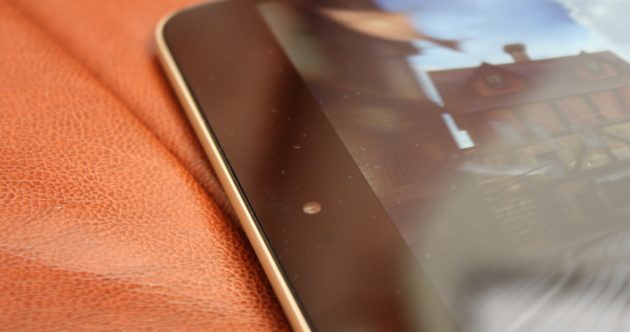
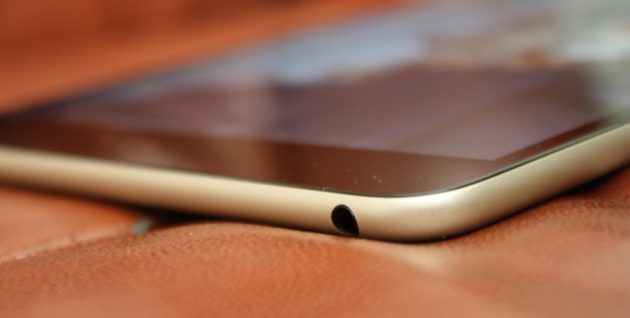
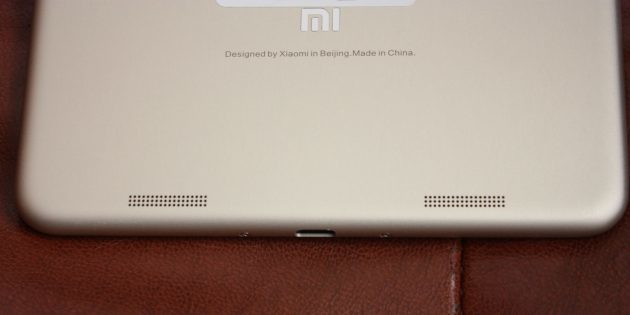
The buttons sit close enough. Unaccustomed often misses its side, hitting only the central "home." The benefit of the swing volume and power button are on the usual place and easy to get by using only one hand. In general Mi Pad 3 is similar to extremely enlarged smartphone Xiaomi, e.g. Redmi 4A or Mi Max.

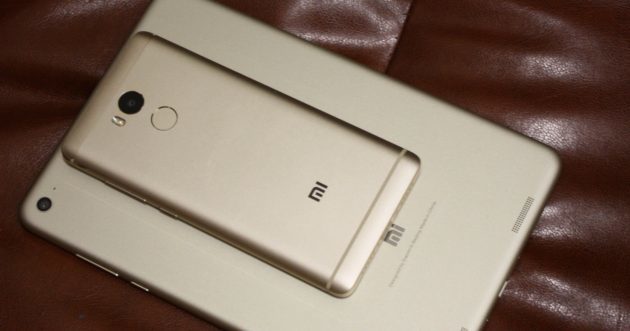

The main camera is located in a corner, like a budget smartphone company. At the bottom of all-metal housing - connector USB Type-C. Slightly above the rear panel are two stereo neat lattice.
The housing piece, composed of one anodized aluminum panel. The display is also protected: use a plate of tempered glass, fully covering the front side of the tablet.
Screen
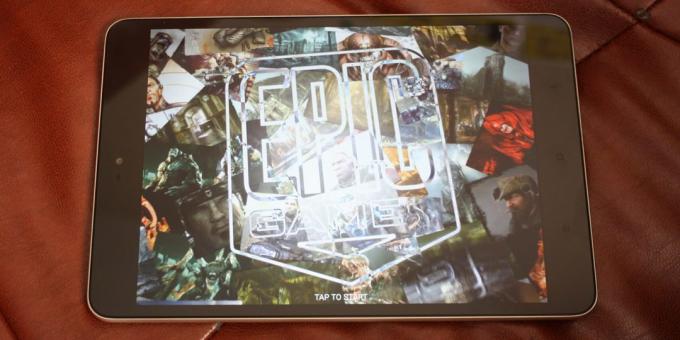
Screen Xiaomi Mi Pad 3 - one of the best in the class. As from Apple, aspect ratio - 4: 3. IPS technology provides maximum viewing angle, and resolution 2048 × 1536 dots - no noticeable eye mesh.
Protective glass and the display, without an air layer. Inversions are no flowers.
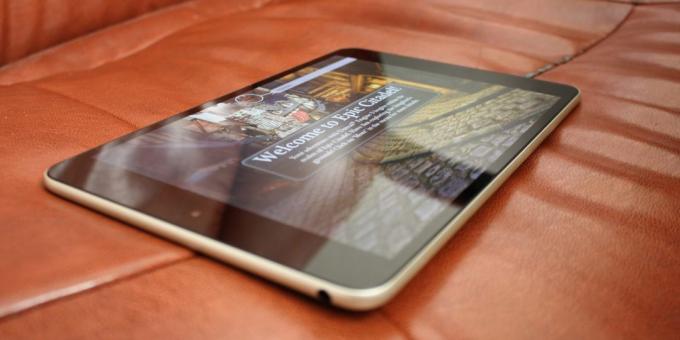
Unfortunately, the developers have completely forgotten about the anti-reflective and oleophobic coating. Fingerprints must regularly scour, and the display is off almost impossible to photograph without glare., With the screen connected but there are several software features.
MIUI
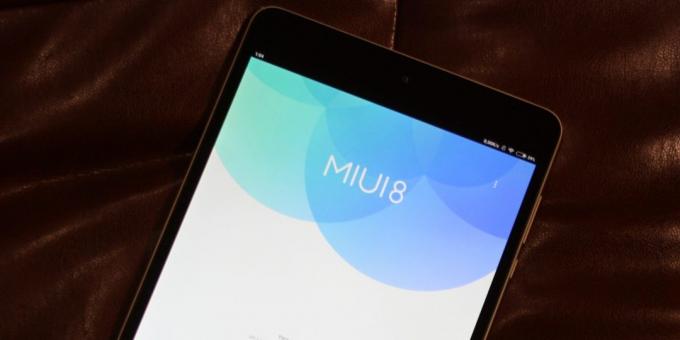
To reduce the load on the user's eyes, the developers have implemented a familiar brand to our readers shell MIUI based on Android 7.0 a few chips include, where necessary:
- Ability to adjust the color display - the choice between the cold, warm and realistic color calibration (based on the white balance).
- Night mode - replacement of white backlight to yellow.
- Monochrome - the replacement of all colors to shades of gray in accordance with the standards.
The first two are already familiar to users and have shown themselves well. The third was the most useful software chip Mi Pad 3. Black-and-white screen with a high contrast and clarity reduces eye strain and partially replaces the E-Ink.

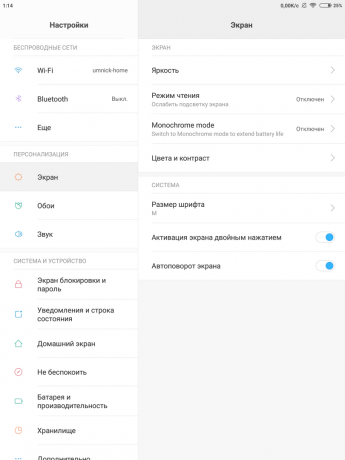
Other capabilities of the operating system quite common: customization, stable updates and proprietary shutter.
Hardware platform and performance

A generation ago, Mi Pad was equipped with an Intel processor. Users are not appreciated, so Xiaomi MI Pad 3 is equipped with a six-core processor MediaTek MT8176: 28-nanometer process technology, 2.1 GHz per core, video accelerator PowerVR GX6250.
Rather weak hardware platform chosen to ensure maximum stability. Xiaomi way to protect themselves from the problems encountered in the past.

Records MediaTek does not beat any synthetic tests, either in real-world applications. But Asphalt and Epic Citadel operate at the highest setting (with such a resolution!). interface drawing - without the lag. The increased amount of RAM - 4 GB - helps the tablet to cope even with heavy PDF-documents.
Permanent memory - 64 GB memory card slot is not - involves the active use of cloud storage. Here, too, unpleasant feature: in the current version of the tablet no hint of a SIM card. We'll have to be content with Wi-Fi or plug-OTG for conventional drives.
multimedia Features
They are quite scarce: front camera 5 Mp (aperture f / 2,0) and the main 13 Mn (aperture f / 2,2). Both without flash and enhanced auto focus. Most conventional camera installed in a budget smartphone. Video chat and document scanning enough, but no more.

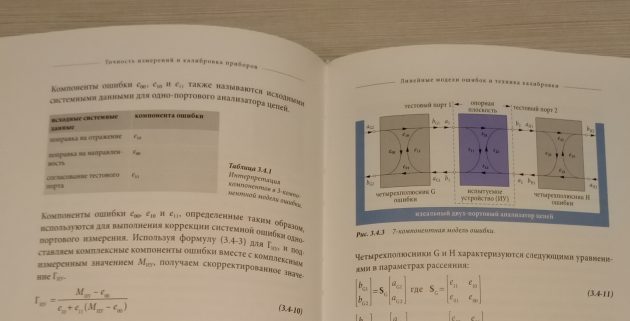

Peripheral capabilities are also limited. Wireless interfaces are Bluetooth 4.1 and dual-band Wi-Fi 802.11 / a / c with support for Wi-Fi Display and fast Wi-Fi Direct data transfer. Wired interfaces - USB Type-C with OTG support and traditional mini-jack for headphones.
autonomy
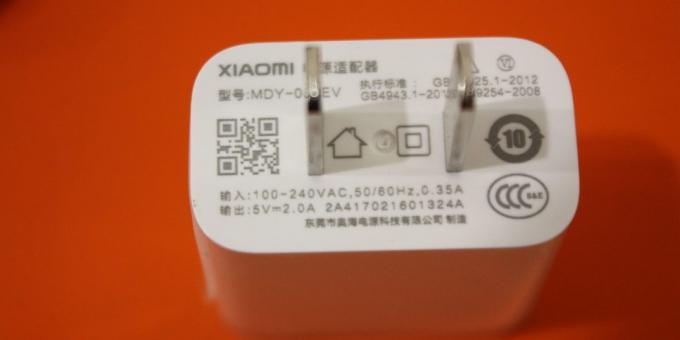
Xiaomi Mi Pad 3 is equipped with a rather impressive for its class battery of 6600 mAh. Since 4G is not supported, it is enough for over 10 hours at an average brightness of the display and in a mixed mode (using three-dimensional games, internet surfing). In the monochrome mode, this figure increases to 1.5 hours. Turn off Wi-Fi extends the life of the tablet for another hour.
Unfortunately, there is no fast charging function. Charging Standard - 5 V / 2 A, so the process takes four hours.
results
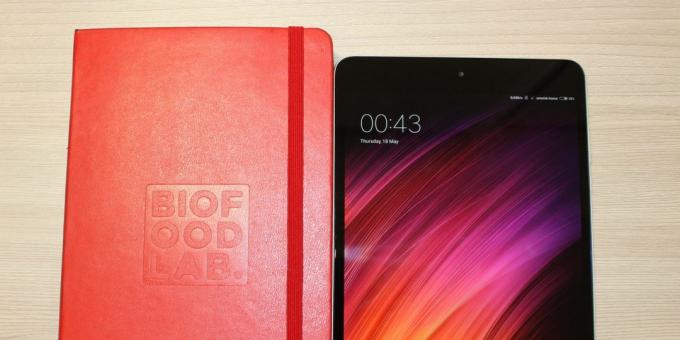
Mi Pad 3 looks great, runs fast, performs all the functions of a handheld tablet and many will abandon the reading room with a screen e-ink.
| pros | Minuses |
| balanced filling | The lack of a memory card slot |
| Nice look | No built-in 4G-modem |
| ergonomics | The absence of anti-reflective coating |
| excellent screen | |
| The availability of special display modes |
Competitors in the Xiaomi Mi Pad 3 a little. Chief among them - iPad mini - is much more expensive and runs on iOS.
For Android fans, there are three pretty good branded tablet with an aspect ratio of 4: 3 and the compact dimensions: Samsung Galaxy Tab A, Huawei Media Pad T1 and Mi Pad. The first two will cost the buyer in 300-400 dollars. Xiaomi Mi Pad 2 can be purchased for 284 dollar, More productive and more memory Mi Pad 3 - for $ 240 with discount. A good budget solution for every day.

